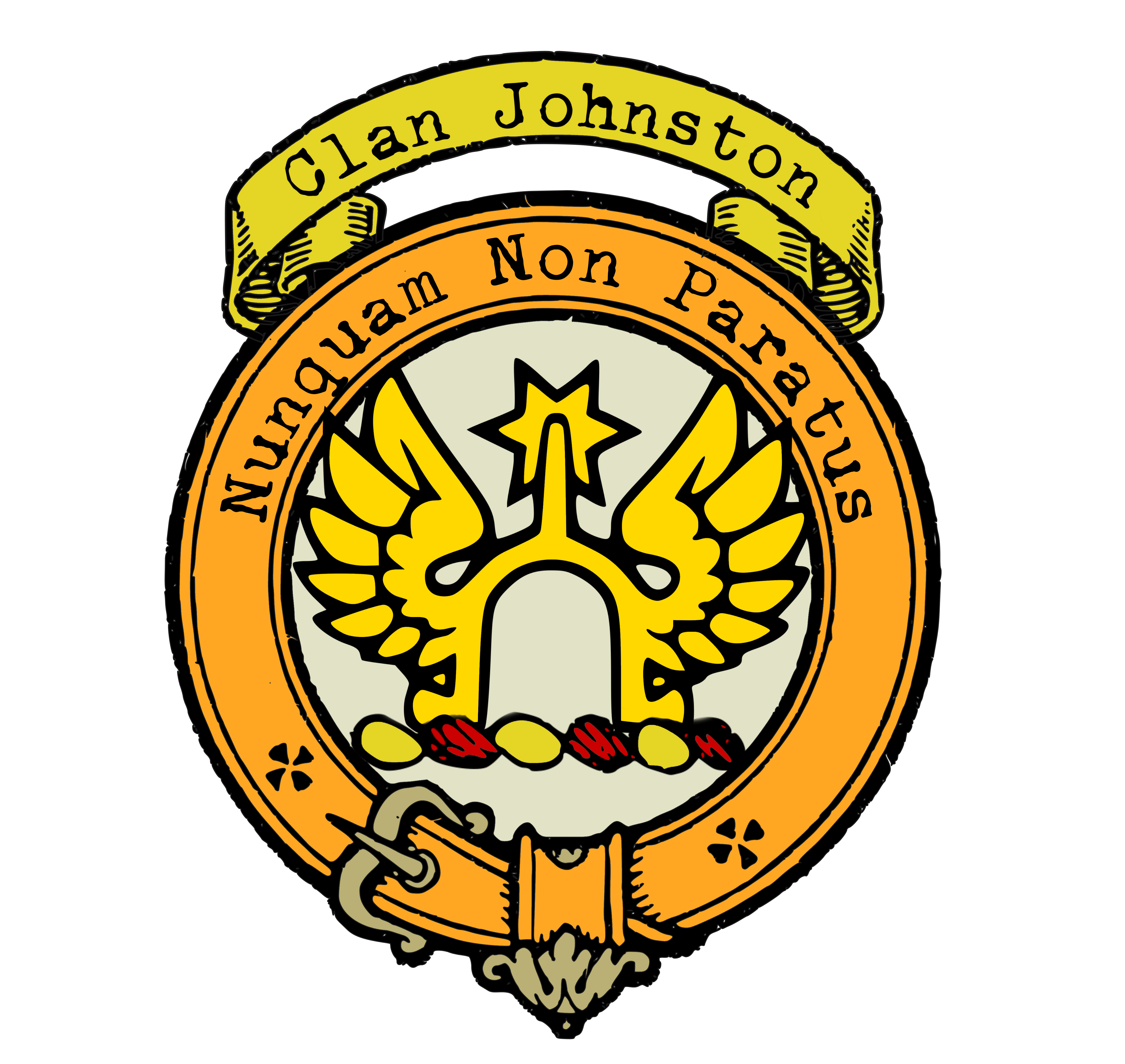Johnston Clan Crest
|
|
CREST: A winged spur rowel MOTTO: Nunquam non paratus TRANSLATION: Never unprepared VARIATIONS: Johnstone/Johnson |
| Deep in the heart of Annandale, Dumfriesshire, Scotland, lies the ancestral homeland of the illustrious Clan Johnston. The origins of this ancient clan can be traced back to the 12th century when John, the founder of the family, bestowed his name upon the lands he called his own. From there, his son Gilbert adopted the surname, thus establishing the lineage of the Johnstones.
The precise identity of John, the father of Gilbert, remains shrouded in the mists of time. It is believed that he may have been a native settler who pledged his allegiance to the Bruces when they became lords of Annandale. Another possibility is that John hailed from Yorkshire or other southern regions, following his overlords to their Scottish estates. Regardless of his origins, he was gifted with the lands that would later form the parish and barony of Johnstone. |
|
 |
|
| Purchase @ Redbubble Purchase @ Amazon.com Purchase @ Amazon.co.uk |
|
| Gilbert, the son of John, emerges in historical records through charters granted by William, Lord of Annandale, during the period of 1195-1215. Notably, he is referred to as Gilbertus de Jonistoune, signifying both his patronymic and territorial surname. His presence is witnessed in various charters, attesting to his prominence and influence within the region.
As the centuries rolled on, the Clan Johnston continued to leave their mark on Scottish history. Johan de Jonestone, a knight from Dunfries, along with Gilbert de Jonestone of Dumfriesshire and Thomas de Jonestone of Roxburghshire, rendered homage in 1296. Their loyalty and service to their homeland were honored in their acts of homage. The seals of Johan and Gilbert, dating back to this era, offer intriguing glimpses into their lives. Johan’s seal portrays a shield adorned with two garbs and a canton dexter over a third, while Gilbert’s seal features a gem depicting a profiled head. These symbols not only represented their family but also symbolized their status and allegiance. Among the notable figures in the clan’s history was Stephen de Johnston, commonly known as “the Clerk.” Said to be a younger brother of the Laird of Annandale, he served as the secretary to Thomas, Earl of Mar, who passed away in 1377. Stephen’s position as secretary illustrates the importance and trust placed upon him by the earl. The influence of the Clan Johnston extended beyond the borders of Annandale. Aye (Adam) Jonson participated in the perambulation of the bounds of Kyrknes and Louchor in 1395, while William Jonson of Mourthull served as one of the assizors on the marches of Woodwrae in 1388. These individuals, through their involvement in border affairs, showcased the clan’s wider impact on regional politics. The surname Johnston was not confined to a single geographical location. Andrew Johnson, referred to as “Schaklok,” gained admission as a burgess of Aberdeen in 1436. Similarly, Adam of Jonstoun played a role as one of the conservators of the truce between Scotland and England in 1451. These instances highlight the spread of the Johnston name and its association with influential figures throughout the land. The allure of the Johnston name was not confined to Scotland alone. John Johnston, known as Jonston, received letters of denization in England in 1463, indicating his acceptance and integration into English society. Furthermore, individuals such as Adam of Johnston, Robin of Johnston, Gilbert of Johnston, and Mathewe of Johnstone petitioned for safe conducts to travel in England in the same year. Their association with the name suggests a connection to Perth, which was often referred to as Johnstoun orSt. Johnstoun in historical records. It is plausible that these individuals derived their surnames from this location, adding to the diverse branches of the Johnston family tree. Another branch of the Johnstones took their name from the lands of Jonystoun, now known as Johnstonburn, situated in the parish of Humbie, East Lothian. Hugh de Jonystoun witnessed a charter of these lands to the House of Soltre (Soutra) around 1250. John de Jonystoun, described as the “quondam filius Hugonis de Jonystoun” between 1296 and 1324, relinquished his entire land of Jonystoun to Soltre, including all its liberties and privileges. This branch of the clan established their legacy in East Lothian, contributing to the rich tapestry of the Johnston name. Throughout their history, the Johnstones were known for their power and resilience. They stood as one of the most formidable and fiercely independent clans of the West Border. Often engaged in feuds with neighboring clans, particularly the Maxwells, they earned the ironic epithet of “the gentle Johnstones.” This description captures the paradox of their strong, yet sometimes contentious, nature. |
|
Citations:
|
|

